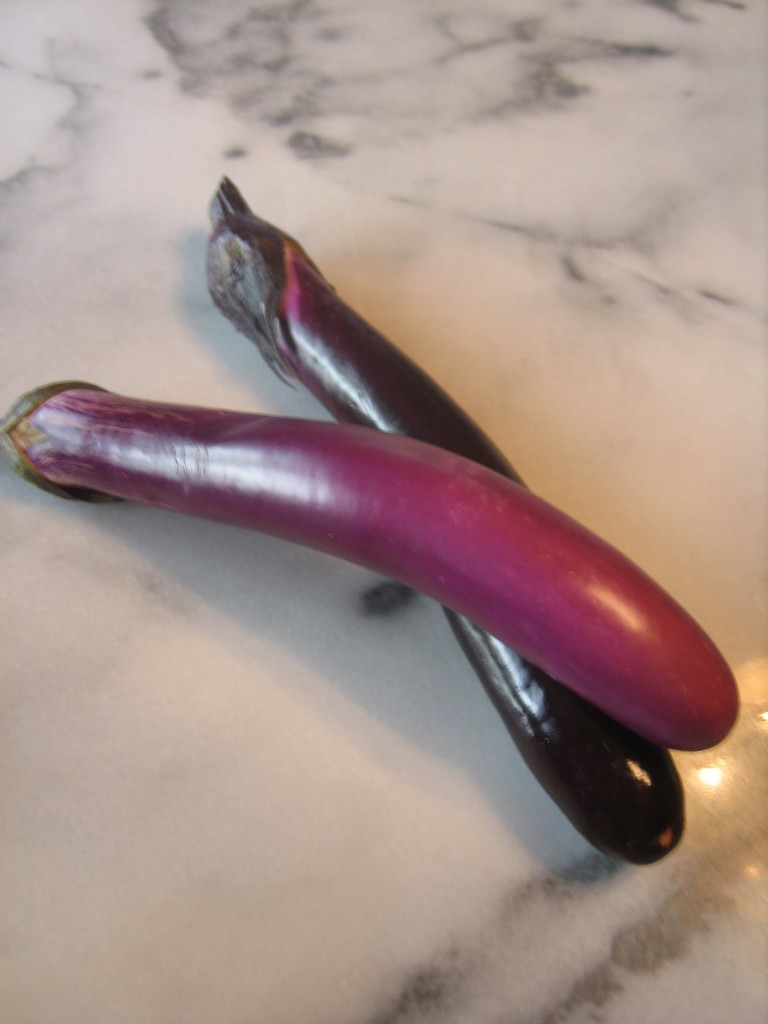When I was young, I didn’t appreciate the wonders of eggplant. My mother grew big pear-shaped eggplants in the garden. She simply boiled them and I found them bland and boring. As an adult I discovered slender Asian eggplants. I found the eggplant’s inherent mild flavor could be an asset. When cooked, eggplants act like sponges soaking up a myriad of flavors to take on a new dimension. Their soft texture becomes creamy and lush.

In northern California, eggplants reach maturity in late summer and early fall. They grow firm and plump with shiny purple skin. Slender Asian varieties such as the lighter colored Chinese eggplant and the dark purplish-black Japanese eggplant contains less seeds for a creamier texture. When stir-fried or braised, they can hold their shape better , especially when attached to the skin, rather then collapse into a shapeless mass as pear-shaped varieties tend to do.
Cook Asian eggplants in braised dishes such as Braised Eggplant, Pork, and Mushrooms (recipe on page 93 of The Hakka Cookbook.) You can view a cooking video preview of the recipe on grokker.com
Restaurants often deep fry eggplant because it saves time. Then they stir-fry the fried eggplant quickly with seasonings. For the home cook, braising is a healthier, less oily, and easier technique to achieve a soft succulent texture and deep flavor found in many eggplant dishes served in restaurants. In braising, stir-fry the eggplant pieces briefly to coat with a little oil, then add liquid and seasonings. Cover and cook over low heat until the eggplant turns tender and soaks up the flavorful liquid. The texture may not be quite as lush and oily as the fried version but it’s far less messy, less greasy, and easier for the home cook.
